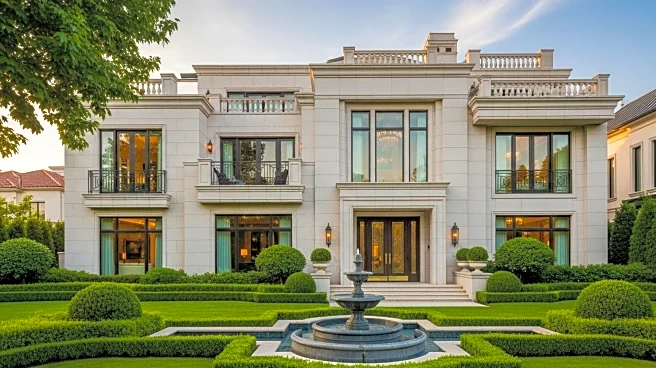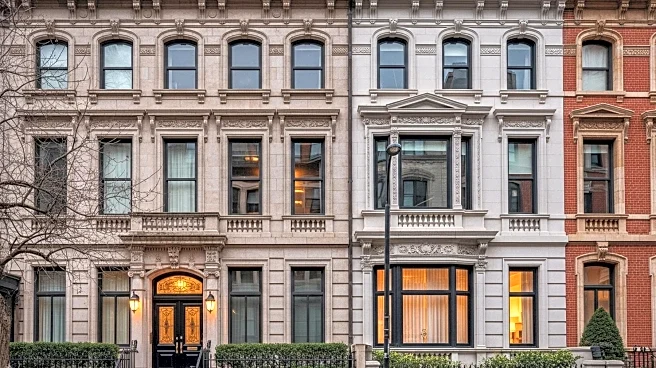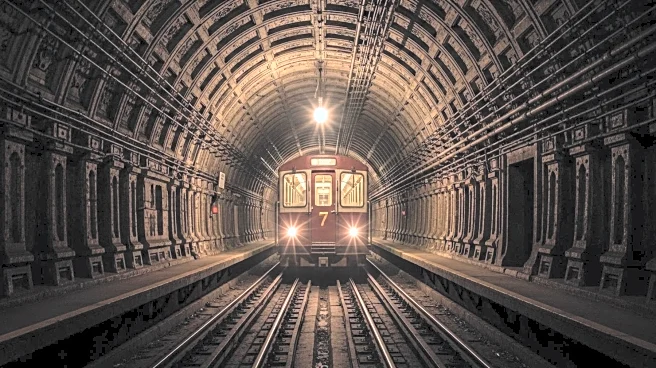What's Happening?
The former residence of renowned playwright Thornton Wilder, located near Gramercy Park in New York City, has been listed for sale at $1.65 million. The apartment, which Wilder moved into shortly after writing his Pulitzer Prize-winning play 'Our Town,' is a two-bedroom, two-bathroom co-op filled with natural light. The home features high, beamed ceilings, arches, casement windows, original built-in bookcases, and hardwood floors. The building, dating back to 1930, is adorned with gargoyles and offers amenities such as a live-in superintendent, a doorman, a laundry room, and bike storage. The listing is managed by Brian K. Lewis of Compass.
Why It's Important?
The sale of Thornton Wilder's former residence highlights the enduring legacy of the playwright, whose works continue to influence American theater. Wilder's exploration of social and economic themes in plays like 'The Matchmaker' and 'Our Town' remain relevant today, reflecting the cultural and historical significance of his contributions. The listing also underscores the value of historical properties in New York City, particularly those associated with notable figures, which can attract interest from both real estate investors and cultural enthusiasts.
What's Next?
Potential buyers interested in acquiring a piece of literary history may view the property, which offers unique architectural features and a prime location near Gramercy Park. The sale could attract attention from individuals seeking a residence with historical significance or those looking to invest in New York City's real estate market. The building's conversion to co-ops in 1983 and its amenities may appeal to buyers seeking a blend of historical charm and modern convenience.
Beyond the Headlines
The listing of Wilder's former residence may spark discussions about the preservation of historical properties and the importance of maintaining cultural heritage in urban environments. As cities like New York continue to evolve, balancing development with the conservation of historically significant sites remains a challenge. This sale could serve as a reminder of the value of preserving spaces that have housed influential figures and contributed to the cultural fabric of the city.












